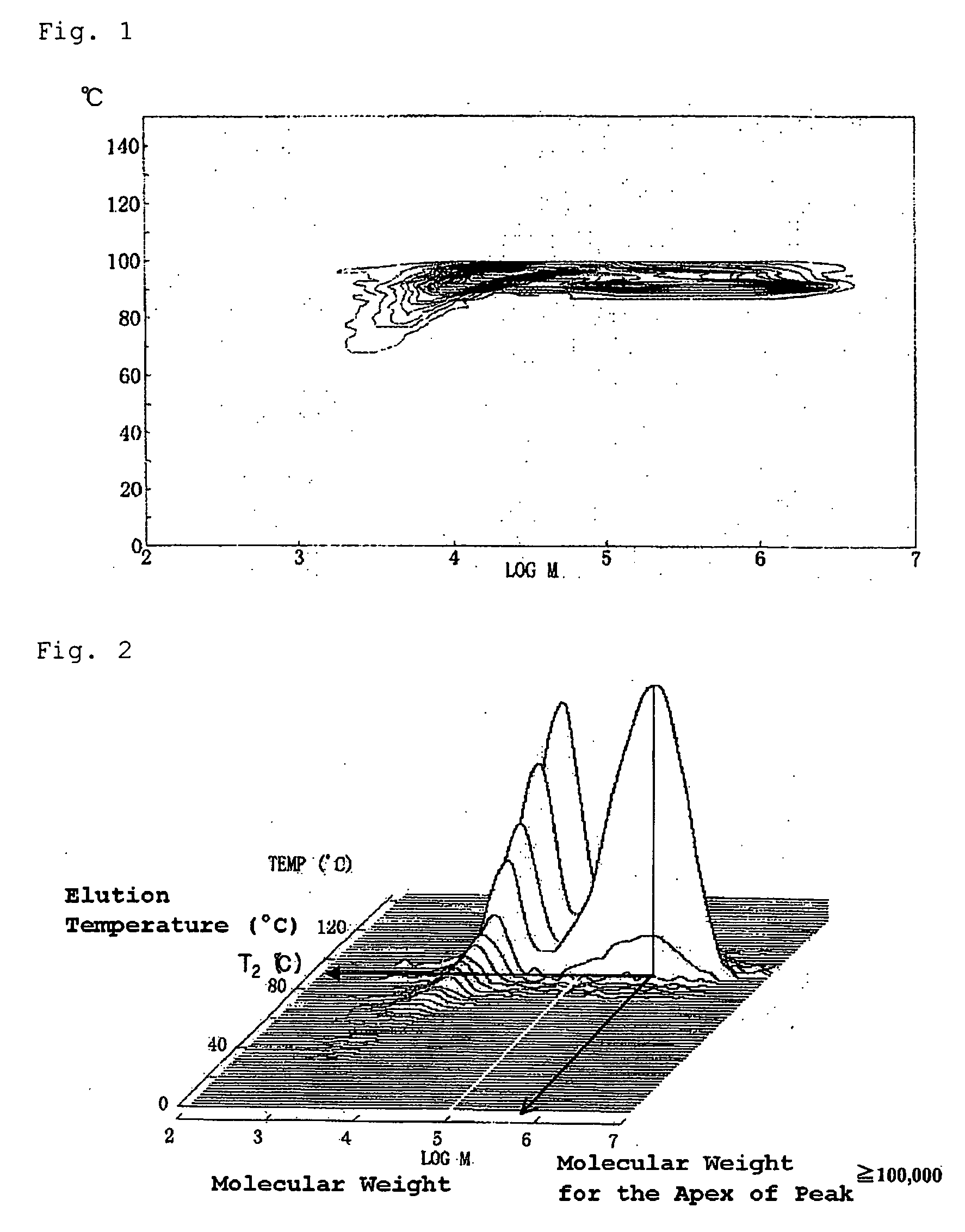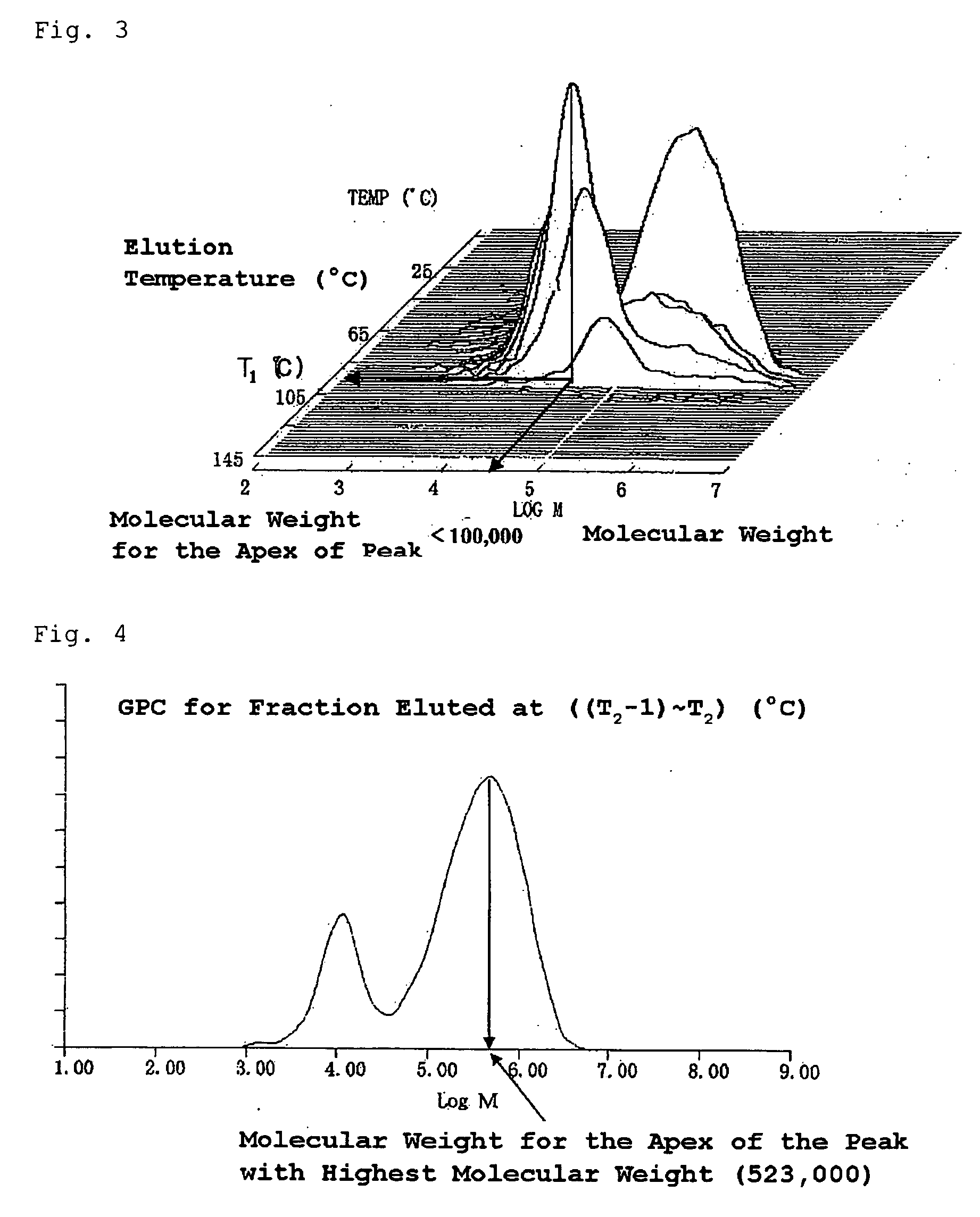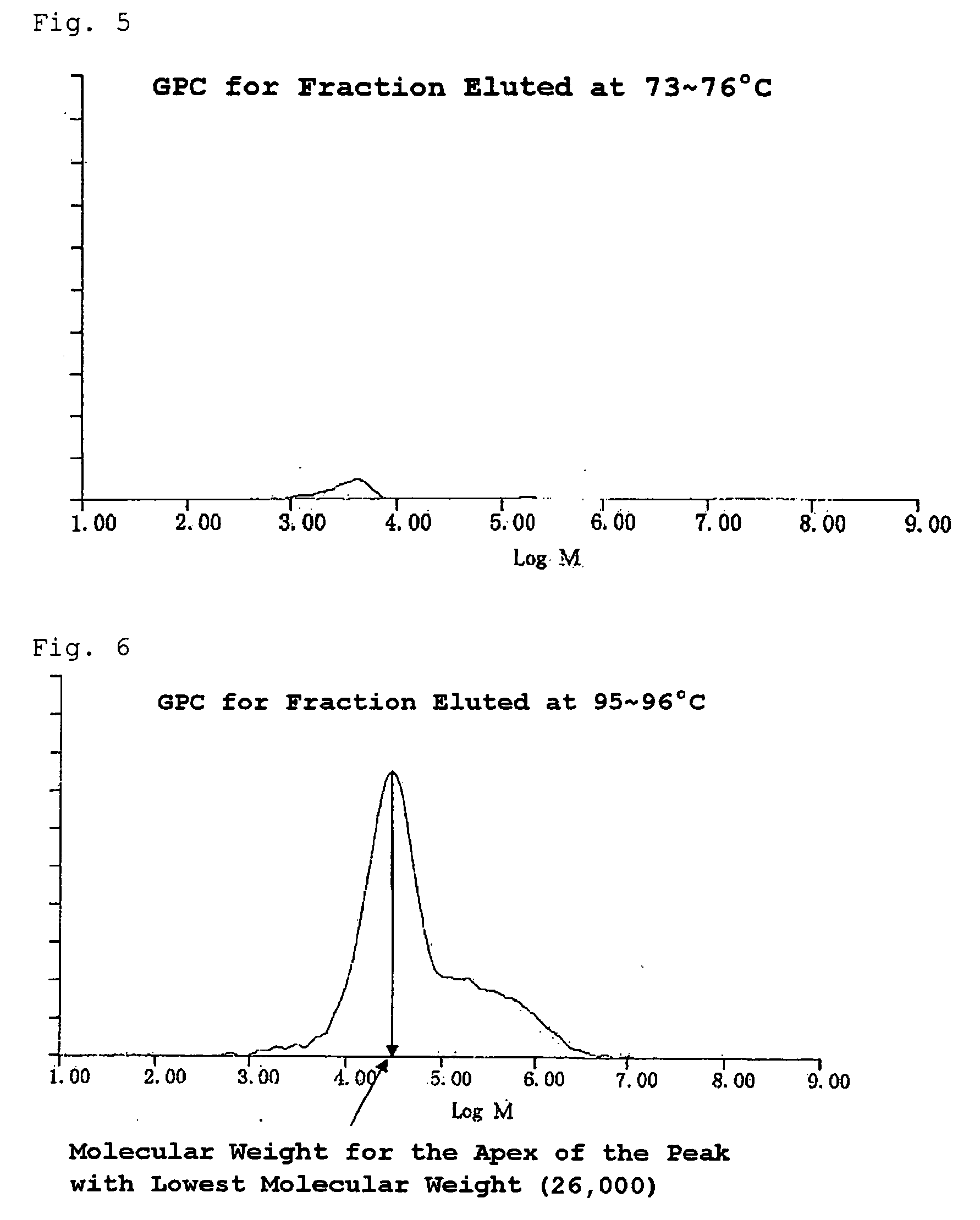Ethylene polymer and application thereof to moldings
- Summary
- Abstract
- Description
- Claims
- Application Information
AI Technical Summary
Benefits of technology
Problems solved by technology
Method used
Image
Examples
synthetic example 1
[0303] [Preparation of Solid Catalyst Component (α)]
[0304] A suspension was prepared from 8.5 kg of silica dried at 200° C. for 3 hours and 33 liters of toluene, and then 82.7 liters of a methylaluminoxane solution (A1=1.42 mol / liter) was added dropwise over 30 minutes. Then, the temperature of the mixture was elevated to 115° C. over 1.5 hours, and the mixture was allowed to react at that temperature for 4 hours. Subsequently, the reaction mixture was cooled to 60° C., and the supernatant liquid was removed by decantation. Thus obtained solid catalyst component was washed with toluene three times and resuspended in toluene to yield a solid catalyst component (α) (total volume 150 liters).
[0305] [Preparation of Supported Catalyst]
[0306] In a two-necked 100 ml-flask which had been sufficiently purged with nitrogen, 20.39 mmol (in terms of aluminum) of the solid catalyst component (α) suspended in 20 ml of toluene was added, and under stirring, 45.2 ml (0.09 mmol) of a toluene soluti...
example 1
[0307] [Polymerization]
[0308] A 1000 ml-autoclave which had been sufficiently purged with nitrogen was charged with 500 ml of n-heptane, and 0.25 ml (0.25 mmol) of triisobutylaluminum at a concentration of 1 mol / liter and 3.85 ml of the solid catalyst component (β) obtained in Synthetic Example 1 (corresponding to 0.003 mmol in terms of Zr atoms) were introduced. The autoclave was pressurized with an ethylene.hydrogen mix gas having a hydrogen content of 2.53 vol % to a pressure of 8.0 kg / cm2 G, and polymerization was initiated at 80° C. The ethylene.hydrogen mix gas was added during polymerization to maintain at 8.0 kg / cm2 G, and polymerization was carried out for 70 minutes. After polymerization, pressure was removed, and the autoclave was purged with nitrogen to remove the ethylene.hydrogen mix gas.
[0309] To this autoclave, 0.25 ml (0.25 mmol) of triisobutylaluminum at a concentration of 1 mol / liter and 2.7 ml of 1-hexene were introduced, the autoclave was pressurized with an et...
example 2
[0311] [Polymerization]
[0312] A 1000 ml-autoclave which had been sufficiently purged with nitrogen was charged with 500 ml of n-heptane, and 0.25 ml (0.25 mmol) of triisobutylaluminum at a concentration of 1 mol / liter and 3.90 ml of the solid catalyst component (β) obtained in Synthetic Example 1 (corresponding to 0.00304 mmol in terms of Zr atoms) were introduced. The autoclave was pressurized with an ethylene.hydrogen mix gas having a hydrogen content of 2.53 vol % to a pressure of 8.0 kg / cm2 G, and polymerization was initiated at 80° C. The ethylene.hydrogen mix gas was added during polymerization to maintain at 8.0 kg / cm2 G, and polymerization was carried out for 63 minutes. After polymerization, pressure was removed, and the autoclave was purged with nitrogen to remove the ethylene.hydrogen mix gas.
[0313] To this autoclave, 0.25 ml (0.25 mmol) of triisobutylaluminum at a concentration of 1 mol / liter and 2.7 ml of 1-hexene were introduced, the autoclave was pressurized with an ...
PUM
| Property | Measurement | Unit |
|---|---|---|
| Temperature | aaaaa | aaaaa |
| Temperature | aaaaa | aaaaa |
| Temperature | aaaaa | aaaaa |
Abstract
Description
Claims
Application Information
 Login to View More
Login to View More - R&D Engineer
- R&D Manager
- IP Professional
- Industry Leading Data Capabilities
- Powerful AI technology
- Patent DNA Extraction
Browse by: Latest US Patents, China's latest patents, Technical Efficacy Thesaurus, Application Domain, Technology Topic, Popular Technical Reports.
© 2024 PatSnap. All rights reserved.Legal|Privacy policy|Modern Slavery Act Transparency Statement|Sitemap|About US| Contact US: help@patsnap.com










